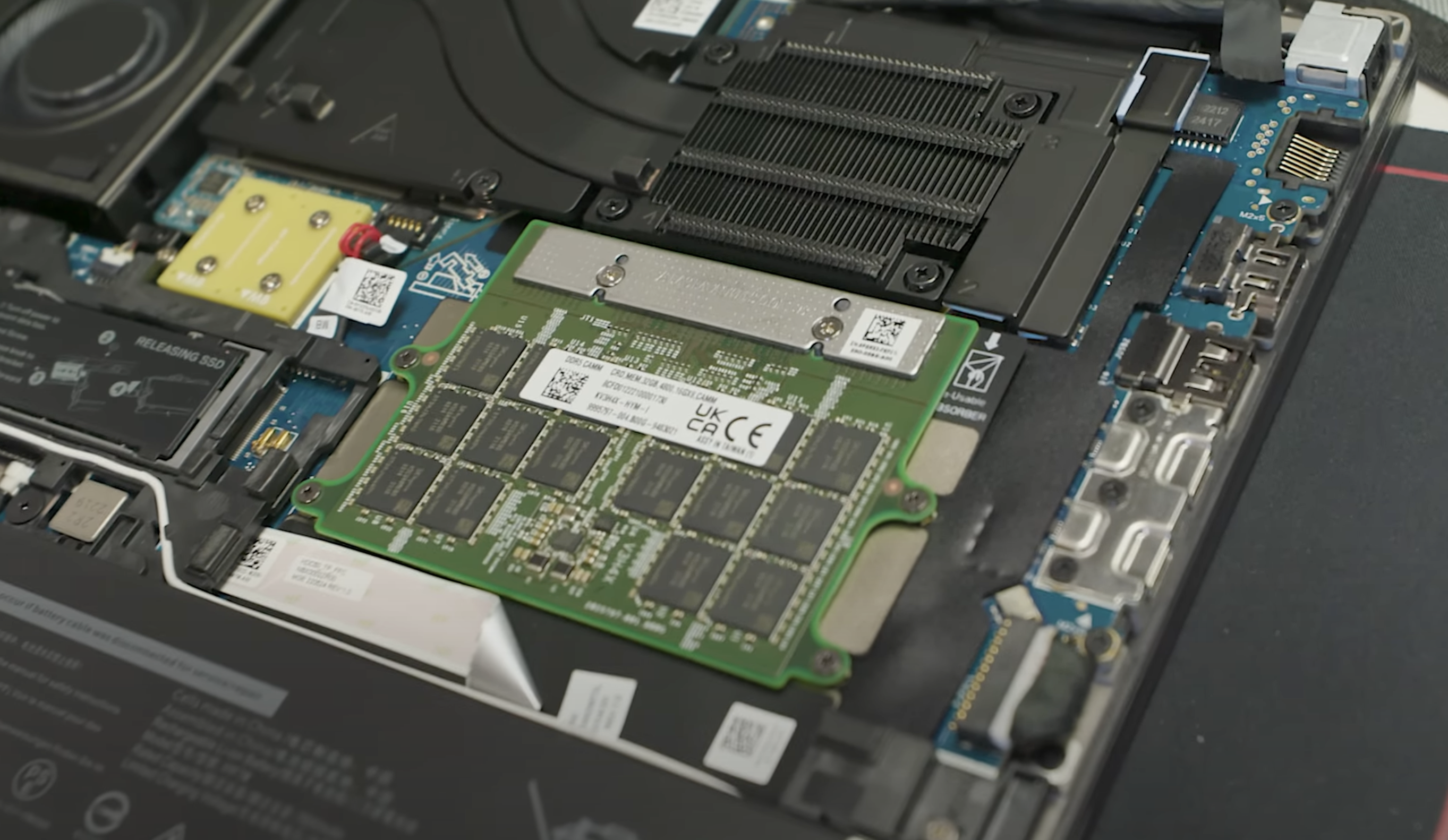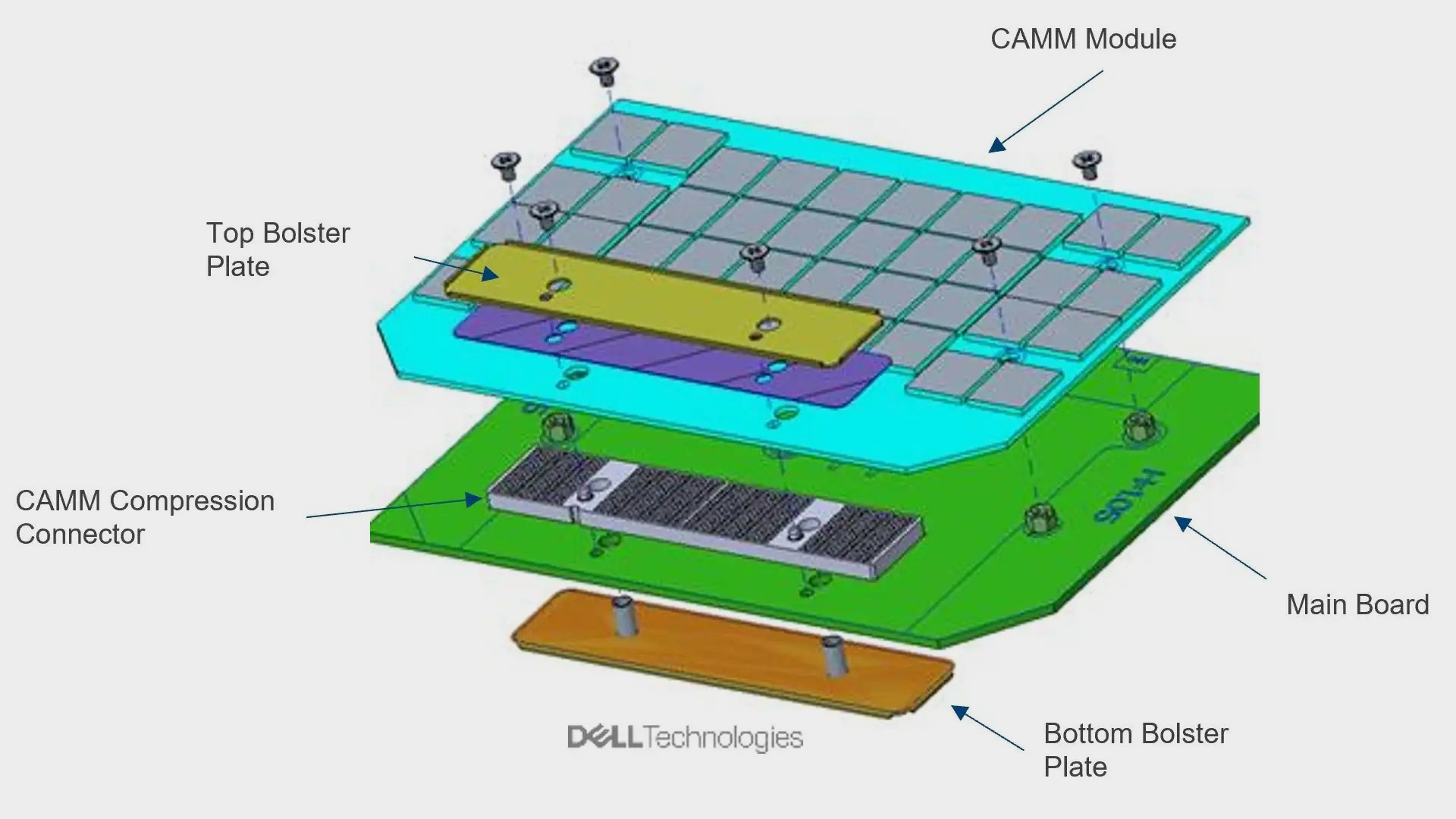Your laptop will be faster and thinner in 2024 thanks to CAMM memory
So long SO-DIMMS, and thanks for all the fun.

The next generation of laptop RAM is nearing final validation. Known as CAMM, this new system memory form factor is set to replace SO-DIMMs in laptops as early as next year and promises to both improve performance and enable slimmer form factors.
Strictly speaking, laptops with CAMM memory modules are already available. Dell has done the early leg work on the new memory form factor and is already selling select Precision workstation laptops with CAMM modules.
However, those modules are built to Dell's proprietary spec for CAMM, or Compression Attached Memory Module. Dell recently told PC World that the specification for CAMM is currently being ratified for industry-wide use by the memory standards body JEDEC, with the final spec due out later this year and retail laptops based on the final homologation of CAMM arriving in 2024.
For the record, the "Compression Attached" terminology refers to the way the modules are screwed down as opposed to slot fitted like SO-DIMMs. You can see exactly how the CAMM mechanicals work in this PC World video.
SO-DIMMS have been around for 25 years and while very successful, their semi-stacked multi-module approach costs quite a bit of space in terms of thickness, otherwise known as Z-height. CAMM modules replace those multiple layered SO-DIMMS with a single, flat PCB which is much thinner than two or four SO-DIMMS and the sockets required to accommodate them.
It's also worth noting that the adoption of CAMM memory will prevent laptop makers from cheaping out and sticking in a single SO-DIMM, which results in sub-optimal single-channel memory—not ideal for gaming. With CAMM memory, you can have multi-channel memory from a single module.
The other major upside with CAMM memory is performance. The specification for SO-DIMMS tops out at DDR5-6400. And that's exactly where CAMM modules are expected to kick off, with speeds scaling from there.
Keep up to date with the most important stories and the best deals, as picked by the PC Gamer team.
One other critical question is whether CAMM modules will encourage laptop makers not to solder memory directly to the motherboard, thereby preventing upgrades. Where system thickness is pushing system makers to design in soldered memory, CAMM may make the difference.
However, soldered-on memory will always be cheaper than a bolt-on module. Where costs are the driving factor in choosing soldered memory solutions, we doubt CAMM technology will be much help.
Best CPU for gaming: Top chips from Intel and AMD
Best gaming motherboard: The right boards
Best graphics card: Your perfect pixel-pusher awaits Best SSD for gaming: Get into the game first

Jeremy has been writing about technology and PCs since the 90nm Netburst era (Google it!) and enjoys nothing more than a serious dissertation on the finer points of monitor input lag and overshoot followed by a forensic examination of advanced lithography. Or maybe he just likes machines that go “ping!” He also has a thing for tennis and cars.



